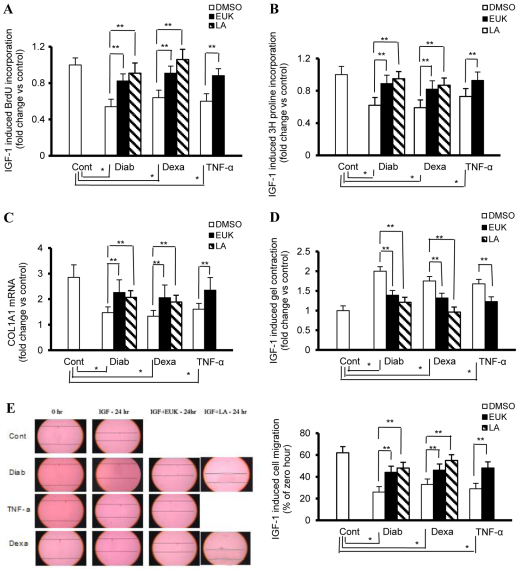Fig. 4.
Key fibroblast functions that are essential for wound healing are altered as a function of diabetes, low-grade inflammation and hypercortisolemia. Fibroblast from a rat model of type 2 diabetes (Diab) and control fibroblasts treated chronically with either vehicle (Cont), TNFα (4 ng/ml every day for 4 days) or dexamethasone (Dexa; 20 ng/ml every other day for 8 days) were serum starved for 24 hours prior to treatment with IGF1 (50 ng/ml) and used for the assessment of collagen synthesis and cell proliferation, contraction and migration. EUK-134 and LA were used at concentrations of 100 μM and 500 μM, respectively. (A) BrdU incorporation into DNA in cells cultured in 96-well plates was used as an indicator for the determination of the rate of cell proliferation. (B) Radiolabelled proline uptake by cells cultured in 24-well plates was used as an indicator for the measurement of the rate of collagen synthesis. (C) TaqMan real-time PCR conducted on cDNA of cells cultured in six-well plates was used in the determination of the rate of COL1A1 expression. (D) The weight of floating collagen gel matrix of cells cultured in 24-well plates was used for the quantification of the rate of cell contraction. (E) An in vitro scratch wound assay of cells cultured in six-well plates was used to assess the rate of cell migration. Experiments were performed in triplicate for each of the four cell lines (n=4 for each). Results represent the mean ± s.e.m. *Significantly different from corresponding Cont values at P≤0.05; **significantly different from corresponding DMSO-treated Diab, TNFα or Dexa values at P≤0.05.

